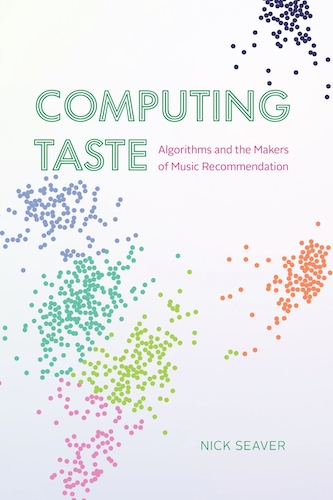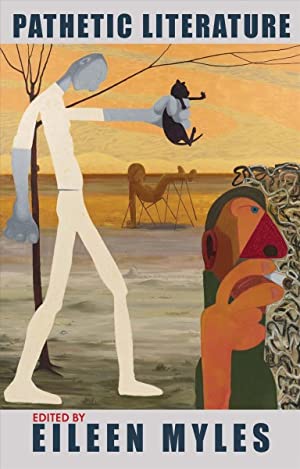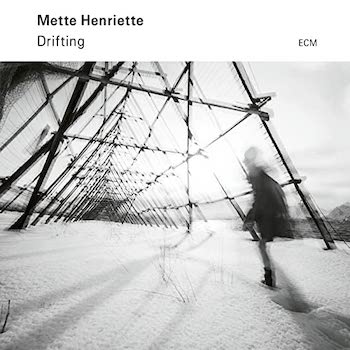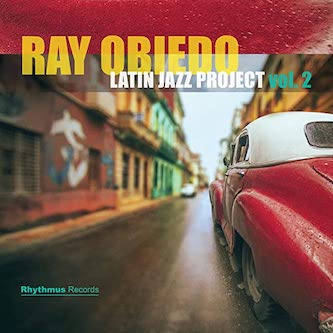January Short Fuses — Materia Critica
Each month, our arts critics — music, book, theater, dance, television, film, and visual arts — fire off a few brief reviews.
Books
This is a book for academic specialists rather than general readers. If you’re a specialist, you’ll find it well worth the read.
 Music lovers have long dreamed of a celestial jukebox that would allow them to play any song, anywhere, any time with the push of a button. Today they have it — more than one, in fact, in the streaming services Spotify, Apple Music, Amazon Music Unlimited, and others.
Music lovers have long dreamed of a celestial jukebox that would allow them to play any song, anywhere, any time with the push of a button. Today they have it — more than one, in fact, in the streaming services Spotify, Apple Music, Amazon Music Unlimited, and others.
For many people, all that bounty has a downside. With millions of pieces of music to choose from, which one to listen to next? A Verdi aria, a John Coltrane track, Beyoncé or Taylor Swift’s latest, the old Delta blues of Mississippi John Hurt, the up-to-date music of Harry Styles or Lizzo? Or any other of the more than 80 million tracks available on the services?
The answer for many people: Use the services’ music recommendation engines that offer advice on what music you might want to hear next, based on what you’ve already listened to. How these recommendation systems shape our musical tastes has significant implications for the future of the music industry, of musicians, of musical styles, of individual’s listening habits, and ultimately of society itself. All that is ripe for an in-depth, book-length investigation.
If that’s what you’re looking for, Computing Taste: Algorithms and the Makers of Music Recommendation by Nick Seaver (University of Chicago, 216 pages), is not the book for you. Instead, it’s an academic examination by an anthropologist of how those algorithms and systems are made and the people who make them, rather than of what their effects are. If you’re able to cut through its often-dense academic writing and specialized jargon, though, you’ll find a useful deep dive into precisely how these systems are built, the people who build them, their goals and aspirations, and much more.
Ultimately, it’s a book for academic specialists rather than general readers. If you’re a specialist, you’ll find it well worth the read. If not, you’ll have to wait until someone else takes an investigative deep dive into the systems’ long-term effects.
— Preston Gralla
This far-flung, idiosyncratic collection of transgressive poems, plays, and prose is laser-focused on celebrating the outsider.
 In the anthology Pathetic Literature (Grove Press, 672 pages), Lambda award–winning poet and writer Eileen Myles, whose work illuminates the sublime quotidian of everyday life, has gathered together what could be seen as a global anthology. The book’s 106 contributors reinvigorate the meaning of pathos — their words inspire deep-seated emotions. Among the volume’s lesser known and emerging literary voices, there are selections from the work of Franz Kafka, Samuel Beckett, Simone Weil, Rumi, Gwendolyn Brooks, Jorge Luis Borges, and Victor Hugo.
In the anthology Pathetic Literature (Grove Press, 672 pages), Lambda award–winning poet and writer Eileen Myles, whose work illuminates the sublime quotidian of everyday life, has gathered together what could be seen as a global anthology. The book’s 106 contributors reinvigorate the meaning of pathos — their words inspire deep-seated emotions. Among the volume’s lesser known and emerging literary voices, there are selections from the work of Franz Kafka, Samuel Beckett, Simone Weil, Rumi, Gwendolyn Brooks, Jorge Luis Borges, and Victor Hugo.
Myles writes about their editorial approach: “This gathering is not so much queer, as adamantly, eloquently strange, and touching, as if language itself had to pause.” Another prerequisite for inclusion in the anthology — “undermining of normalcy.”
While the luminaries provide the conceptual palimpsest for the compilation, contemporary artists realize its ambitious vision. Sex abounds with Bob Flanagan’s sadomasochist kink, Samuel Delany’s celebration of public sex, and Kevin Killian’s boyhood trysts. Death permeates various narrations, such as Rebecca Brown’s and Robert Glück’s AIDS caregiving as well as Rose Feliu-Pettet’s detailing of Allen Ginsberg’s deathbed machinations.
Trauma, addiction, and resiliency are examined by Porochista Khakpour, while surrealism infuses Can Xue’s vision of her mother’s death and Dennis Cooper’s conversations with a snowman. Identity is upended in various ways: Michelle Tea’s visit to Poland, Kathy Acker’s childhood memories, Jack Halberstam’s investigation of nothingness, and Tongo Eisen-Martin’s wariness of whiteness.
Andrea Dworkin rages against convention, Judy Grahn ruminates on the fragility of life, Chantal Akerman’s converses with her elderly mother, and Layli Long Soldier conjures up the execution of 38 Dakota men. Some of the more arcane selections include Myles’s own 1991 campaign announcement for US President and a play by Valerie Solanas, the woman who shot Andy Warhol because he wouldn’t produce it.
This far-flung, idiosyncratic collection of transgressive poems, plays, and prose is laser-focused on celebrating the outsider. The result is a resplendent affirmation of humanity that has become so essential and necessary today. In the acknowledgments, Myles hints that Too Pathetic might be forthcoming. Let’s hope so.
— John R. Killacky
Michael Bennett, who is Maori, writes from a powerfully political perspective.

Better the Blood (Atlantic Monthly Press, 336 pages) is the exciting debut novel by screenwriter and director Michael Bennett. Set in present day Auckland, New Zealand, the mystery introduces the supremely determined Maori detective Hana Westerman. She receives an email with a video attachment that leads her to an abandoned building where she finds a man who has been hung in a ritualistic manner, a murder that sets in motion a series of seemingly unrelated deaths.
In the first chapter, Bennett takes the reader back 160 years to a gruesome scene: six British soldiers are sitting for a daguerreotype. In the background of the picture an important Maori chief can be seen, hanging from a tree. We learn that the killer, inspired by this visual, is putting into practice a Maori tradition called “utu,” a call for “rebalancing.” In this case, it is avenging the murder of the Maori chief by killing the descendants of the soldiers in the picture. A second murder provides more important clues — a photo of the daguerreotype and a symbol similar to the one on the cover of novel. Hana deduces that four more people are in danger.
Bennett, who is Maori, writes from a powerfully political perspective. Without being heavy-handed, he gives us a brief history of the land grab instituted by the imperialist British. Initially, the Maori, as dictated by custom, were willing to share with the invaders. However, through a series of legal manipulations, the Brits eventually confiscated their territory (including sacred land), in much the same way as the American government pushed Indigenous people off their land and relegated them to reservations.
The Maori language plays a big part in the machinations of the plot, as well as providing plenty of local flavor by way of traditional sayings. Hana and her daughter Addison speak Maori, which places us directly inside the culture. (Maori words are translated into English throughout the book.)
Complications are provided by Hana’s home life. Her daughter, Addison, is a rapper who sings about Maori pride. At one point, she and her nonbinary friend PLUS1 are arrested after a wild backyard party that welcomed drug use. Eventually, Hana and her ex-husband Jaye decide that it would be best for Addison to live full time with Hana, who finds herself having to juggle single motherhood while dealing with a challenging investigation. It is a trying combination.
Better the Blood supplies various levels of literate enjoyment: it is a captivating crime story, an informative exploration of Maori culture through their history and language, and a pressurized (and very contemporary) family drama between mother and daughter.
— Brooks Geiken
Roosters Crow, Dogs Cry is a frightening but fascinating journey into the harsh depths of a dysfunctional society.
 In 2000, writer Pico Iyer visited Cambodia. It struck him as a “bleeding, often broken country where every moral certainty was exiled long ago, and a visitor finds himself in a labyrinth of sorts, every path leading to a cul-de-sac.” Still, he believed that the trials of major Khmer Rouge leaders at the time offered an opportunity for closure: “It was a time of hope for ill-starred Cambodia.” Polish journalist Wojciech Tochman visited Cambodia over the past decade as part of his series on societies affected by genocide. (An earlier volume, Like Eating a Stone: Surviving the Past in Bosnia, was published in translation in 2008). Spare, agonizing, and brilliantly reported, Roosters Crow, Dogs Cry (Open Letter, 211 pages) indicates that Iyer’s cul-de-sac has morphed into a black hole, at least for the country’s underclass. (The wealthy continue to do just dandy because of foreign investment, especially from China.)
In 2000, writer Pico Iyer visited Cambodia. It struck him as a “bleeding, often broken country where every moral certainty was exiled long ago, and a visitor finds himself in a labyrinth of sorts, every path leading to a cul-de-sac.” Still, he believed that the trials of major Khmer Rouge leaders at the time offered an opportunity for closure: “It was a time of hope for ill-starred Cambodia.” Polish journalist Wojciech Tochman visited Cambodia over the past decade as part of his series on societies affected by genocide. (An earlier volume, Like Eating a Stone: Surviving the Past in Bosnia, was published in translation in 2008). Spare, agonizing, and brilliantly reported, Roosters Crow, Dogs Cry (Open Letter, 211 pages) indicates that Iyer’s cul-de-sac has morphed into a black hole, at least for the country’s underclass. (The wealthy continue to do just dandy because of foreign investment, especially from China.)
The trauma of the Khmer Rouge’s mass slayings continues to shape society in malignant ways, often taking the form of a tight-lipped amnesia that not only postpones acts of mourning but fuels a collective obsession with violence. “There are no executioners in Cambodia,” says one man, “although they’re all around us. The executioners live among the survivors. Or inside the survivors. They’re both executioner and survivor in one and the same body. They see each other every day. On the street, at the market, at work, in the mirror.” Tochman also suggests that the government’s recent crackdown on independent journalism, including censorship of the news, is widening the gap between self-obliteration and reality. Underlying it all is the pitiless lack of resources. Tochman interviews a trio of old women who beg by stepping in front of cars on the highway. His conclusion: “In a nutshell: poverty drives people mad.”
What drew me to Roosters Crow, Dogs Cry was its clear-eyed depiction of the plight of the insane as well as the resilience of those who care for them amid ignorance and hostility. Tochman limns the predicament of Cambodia’s poorest and most helpless people: the severely mentally ill. In a country of 16 million there are only 50 psychiatrists. Cambodia’s only psychiatric wards are in its capital, Phnom Penh. The majority of the country’s mentally sick do not receive treatment. In the rural districts it is not unusual for those who are accused of madness to be imprisoned, tied to a stake, or chained in a pen behind houses, in banana groves, cells, cubicles, and cages. Humane treatment, let alone medication, is hard to come by: victims are placed under house arrest because of fear (they may attack someone or rob neighbors, females may be raped) or the stigma of superstition/black magic (the mad are believed to be cursed or enchanted). Many, including close relatives, wish that the afflicted would die: “She just shits and pisses,” they say. “Pisses and shits.”
Tochman and his team, including photographer Michał Fiałkowski, accompanied psychiatrists from the Transcultural Psychosocial Organization on a mission of mercy. Led by the resolutely stoic Dr. Sody, they ventured from the capital into the hinterlands in search of the mistreated/untreated mentally ill. (It is called “Operation Unchain.”) We hear the voices of the caretakers, which range from the loving to the indifferent, and the sounds of the crazed. Some patients improve with medical care, others do not. Roosters Crow, Dogs Cry, smoothly translated from the Polish by Antonia Lloyd-Jones, is a frightening but fascinating journey into the harsh depths of a dysfunctional society, a tour of humanity at its outer limits.
— Bill Marx
Jazz
It’s the variety of effect, produced with scant instrumentation, that holds my attention.
 Mette Henriette is a young Norwegian tenor saxophonist who plays as if she doesn’t want to disturb the neighbors.
Mette Henriette is a young Norwegian tenor saxophonist who plays as if she doesn’t want to disturb the neighbors.
She received an unusual sign of favor from ECM’s producer Manfred Eichner when the label issued (in 2015) a double-disc set made up of music for her trio (saxophone, piano and cello) and small ensemble.
On Mette Henriette, the saxophonist/composer’s music comes in short bursts. Quietly, or mostly so, she often introduces a pattern on the piano, which becomes (with minor variations) the surface over which Henriette improvises via a kind of hush. Even her ensemble music embraces the gentle. And what an ensemble: besides her sax, she has a trombone, trumpet, three violins a viola, two cellos, a bandoneon, piano, bass, and drums. (The drummer also plays a saw.) The band members mostly stay in the background. On one piece, “Wildheart,” the musicians produce something like a wall of sound over which a wailing Henriette improvises, allowing incursions by the trombone and other instruments. “Strangers by Midday” draws on a typical two-note pattern as an eerie saxophone calls — as if from a distance — like an Emily Bronte character. In her trio work, a swell toward the end of a short piece stands as a major event.
Somehow, despite the predictability, it is all intriguing, even engrossing. Her new ECM album, Drifting, is another trio, this time featuring the returning Johan Lindvall on piano with Judith Hamann on cello. They produce unique sounds together. On “Oversoar,” Lindvall plays a tripping figure over which the saxophone and cello play clashing long tones. At times, Henriette barely produces a sound: she’s like a minimalist version of Ben Webster in the way she makes breath a feature of the playing. The title song, “Drifting,” has a sweeter sound, with Henriette playing gently swaying phrases over a harmonically less challenging background. Her titles are fascinating: I assume “Rue de Renard” is the Parisian street that bumps up against the Hotel de Ville. “A Choo” is the most playful piece of the album’s 15 short cuts. Again the pianist plays a short repeated figure over which the two others improvise. “I villvind” begins with a harsh bowed phrase by the cello. Here the trio sounds threatening. “Chasse” is much more impish. Piano and sax play a little circular phrase together after the pianist’s solo section, and they modulate briefly. It’s that variety of effect, produced with a scant instrumentation, that holds my attention. I am interested to see what Mette Henriette does next.
— Michael Ullman
 In the last two years there has been a windfall of good music produced from the San Francisco Bay Area.
In the last two years there has been a windfall of good music produced from the San Francisco Bay Area.
These three recordings are standouts: Points of View by trumpeter/flugelhornist Bill Ortiz (previously associated with the Santana band), Latin Jazz Project Volume 2 by guitarist/composer Ray Obiedo, and Descarga for Bud by pianist Alex Conde. Each recording takes a different tack. Bill Ortiz supplies vocals on four tracks, Ray Obiedo writes lilting instrumental melodies, and Alex Conde employs Spanish rhythms on compositions by the great Bop pianist Bud Powell.
Highlights on Points of View include spirited solos from Matt Clark on piano and Azar Lawrence on tenor sax. Terrie Odabi’s vocals on “A Toast to the People” (written by Gil Scott Heron and Brian Jackson) dig deep into the original’s soul. Christelle Durandy’s voice graces a lively rendition of “Noche Cubana.” The album’s sturdy backbone is percussionist John Santos, who plays on all the cuts. His bata drumming on “Ain’t Gon Change a Thang” (composed by Wilton Felder) and “Oriental Folk Song” (Wayne Shorter composition) provides expert proplusion. Bata drums were originally used for ceremonial purposes in the Afro-Cuban religion, Santeria. Santos and others have brought these instruments out of a religious context and into contemporary music. Cuban rhythms abound on Points of View. Even the Rodgers and Hammerstein song “My Lord and Master” receives a bolero (ballad) interpretation here. Ortiz plays thoughtful and emotive solos on all of the tunes; he makes an agile use of space, knowing when to play and when to lay out.
 In contrast to Ortiz, Ray Obiedo wrote all of the music on Latin Jazz Project Volume 2 save one, Gerald Wilson’s “Viva Tirado.” Ray took part in the San Jose Jazz Festival this past summer and many of the members of his band play on Volume 2. The recording’s solid foundation is provided by Phil Hawkins on steel pans, Michael Spiro on assorted percussion, Dave Belove on bass, and Peter Michael Escovedo on drums. Solos from current Santana pianist David K Mattews and Bob Mintzer of Yellowjackets fame are all wonderfully conceived. Obiedo plays a mean and lean guitar that perfectly matches his bright and lyrical compositions, most notable being the spritely “Still Life” and the graceful “Santa Lucia.” In fact, Obiedo has a gift for melodic tunes. When was the last time you left a concert humming the songs? Obiedo writes the kind of music that stays with you long after the concert ends.
In contrast to Ortiz, Ray Obiedo wrote all of the music on Latin Jazz Project Volume 2 save one, Gerald Wilson’s “Viva Tirado.” Ray took part in the San Jose Jazz Festival this past summer and many of the members of his band play on Volume 2. The recording’s solid foundation is provided by Phil Hawkins on steel pans, Michael Spiro on assorted percussion, Dave Belove on bass, and Peter Michael Escovedo on drums. Solos from current Santana pianist David K Mattews and Bob Mintzer of Yellowjackets fame are all wonderfully conceived. Obiedo plays a mean and lean guitar that perfectly matches his bright and lyrical compositions, most notable being the spritely “Still Life” and the graceful “Santa Lucia.” In fact, Obiedo has a gift for melodic tunes. When was the last time you left a concert humming the songs? Obiedo writes the kind of music that stays with you long after the concert ends.

Following in the footsteps of fellow Spaniard pianist Chano Dominguez, Alex Conde has taken nine pieces by legendary bebop piano player Bud Powell and put his own flamenco stamp on them. Conde takes flamenco rhythms — tangos, bulerias, alegria, solea, and rumba — and applies them to jazz. The musical result is as deeply personal as it is powerful. San Francisco Bay Area musicians John Santos on percussion, Jeff Chambers on bass, and Colin Douglas on drums supply apt support for Conde’s expressive piano.
Recorded in Oakland, California, Descarga for Bud is the perfect stage for Conde’s impressive, improvisational talents.He gets inside Powell’s complicated, at times frenzied, musical vision through respectful probing. Three tracks are particularly adventuresome: “Bouncing with Bud,” “Hallucinations,” and “Celia.” Other noteworthy cuts include “The Fruit” with Mike Olmos on trumpet, “Wail” with Jeff Narel on steel pans, and “Parisian Thoroughfare” with Jose Luis de la Paz on guitar.
— — Brooks Geiken
Classical Music
It’s hard to say what’s more captivating: Michael Spyres’s knowing illumination of these texts or John Nelson’s absolute command of the music’s character and style.
 With certain artists, you know you’re simply in good hands. Conductor John Nelson and tenor Michael Spyres performing anything by Hector Berlioz is one such pairing. Indeed, the duo’s new account of the French composer’s song cycle Les Nuîts d’Été (Erato) is a case in point: it seems to play and sing itself — which is no mean feat, given the score’s textural transparency, subtle shadings of color, and expansive expressive range.
With certain artists, you know you’re simply in good hands. Conductor John Nelson and tenor Michael Spyres performing anything by Hector Berlioz is one such pairing. Indeed, the duo’s new account of the French composer’s song cycle Les Nuîts d’Été (Erato) is a case in point: it seems to play and sing itself — which is no mean feat, given the score’s textural transparency, subtle shadings of color, and expansive expressive range.
Yet Spyres, Nelson, and the Orchestre Philharmonique de Strasbourg manage it all impressively. Theirs is a Nuîts of bold contrasts, from the nimble purity of “Villanelles” to the wrenching weightiness of “Sur les lagunes” and the impassioned warmth of “Absence.” In fact, it’s hard to say what’s more captivating: Spyres’s knowing illumination of these texts or Nelson’s absolute command of the music’s character and style.
Happily, one doesn’t have to choose. Spyres’s singing — from the darkly flowing “Spectre de la rose” to his surging, tumultuous “L’ile inconnue” — is a marvel of technical and emotional precision. So is Nelson’s grasp of the instrumental writing. “Spectre’s” atmospheric instrumental detail work shimmers, the tonal shift in the middle of “Absence” is potently felt, and the textures of “Au Cemitière” glow eerily.
In such a context, one can forgive the conductor’s sometimes spacious tempos; that aspect emerges more problematically in the disc’s closer, Harold in Italy.
To be sure, there’s nothing to complain about in violist Timothy Ridout’s dusky solos, which always project beautifully, especially in the first movement’s long introduction. And there’s much to admire in Nelson’s larger take on the piece, especially its textural clarity (the “Canto religioso” sequence in the second movement rings flawlessly). But the big movements are occasionally episodic, especially the “Orgy of Brigands,” whose emphasis on contrasts of dynamics never quite results in a corresponding sense of diabolical frenzy.
Václav Luks’s take on Smetana’s epochal Romantic hexalogy ultimately presents a well-worn favorite in a fresh light.

Perhaps it was only a matter of time, but historically informed ensembles are, increasingly, discovering the late-19th- and early-20th-century canons. The best of these efforts — like François-Xavier Roth’s excursions into Mahler and Debussy — have been revelatory. Now add to that list Václav Luks’s take on Bedřich Smetana’s epochal Romantic hexalogy Má vlast with the Collegium 1704.
As a concept, the production (released on Accent) impresses from the start with a world of color and nuance emerging from the period instruments. Woodwinds, especially, sing plangently: Smetana’s chorale-like writing in the outer movements has a real Harmoniemusik kick to it and certain of the solos (like the clarinet licks in “Sárka”) are bewitchingly raw. Also, thanks to the ensemble’s tonal quality, subtle dissonances — such as the cross-relations that dot “Vyšehrad” — cut through.
Throughout, Luks’s ear for balances and sense of tempo are largely on point. As a result, his is a reading that is roundly characterful, especially in the second, third, and fourth movements. Each scenario, for instance, in “Vltava” brims with personality. The “Šárka” is about as vigorous as one might want yet never wanting for clarity. So, too, the contrapuntal sequences in “Bohemia’s Woods and Fields.”
Likewise notable is “Tábor,” which can easily descend into a structural muddle. Here it’s consistently intense, the fast sections exhibiting plenty of bite and the Collegium etching a compelling balance between the lyrical and muscular articulations in the music’s climactic central part.
Where the conductor’s approach to the piece sometimes veers sideways is in the outer movements. The developmental sequence in “Vyšehrad,” for example, lacks a degree of sweep, and the interlude between marching refrains in “Blaník” almost grinds to a halt. That said, the movement’s concluding peroration doesn’t want for fire and these spots hardly doom a recording that ultimately presents a well-worn favorite in a fresh light.
— Jonathan Blumhofer
Visual Art
This gigantic piece of multimedia public art illustrates the highly exciting work that’s being created by new media artists throughout the New England region.

The Conversation at Assembly Row. Photo: Federal Realty Trust
Monumental public art is created for maximum visual impact. Initially, most I-93 commuters missed The Conversation when it “went live” in late August of 2021. Stopped in heavy traffic, I discovered it in early 2022. Located on the garage at 455 Grand Union Boulevard at Somerville’s mixed-use Assembly Row development, The Conversation sits at the contemporary junction of art, technology, and commerce. The stunning installation is a permanent but changing six-story “new-media” art wall: it is outfitted with a 10,500 square foot LED screen adaptable “canvas” in the shape of three heads looking left, right, and center. Digital artworks are shown in sequence throughout the day and night. The sheer immensity of this project is visually startling.
Commissioned by visionary developers Federal Realty Trust, this gigantic piece of multimedia public art illustrates the intensely exciting work that’s being created by new media artists throughout the New England region. Though no major permanent art and technology piece can be completed without drawing on aesthetic as well as technical collaboration, the creative impetus for The Conversation came from talented artist, architect, and environmental designer Vanessa Till Hooper and her Studio HHH, a creative workshop that specializes in new media and interactive artwork that is focused on architecturally integrated interior and exterior installations. Four other creative digital artists — Pamela Hersch, Callie Chapman, Zebbler, and Bruce Rosenbaum — also participated in the first installation phase.
The Conversation hosts visually compelling installations created by local artists and collective studios. The intent is to inspire connection, discussion, and social engagement among diverse communities. The projected images include overlapping abstracted forms and colors used to animate “talking heads.” Other works focus on the faces of members of the local Somerville community.
The Conversation was a collaboration between artists and Design Communication Ltd (DCL), which handled the fabrication and technology integration (see above video), Street-Works Studio, which dealt with the urban planning element, and Daktronics, which provided the LED technology. Inspiration for the project came after Federal Realty Trust leadership viewed Illuminus, the Boston-based yearly digital and light art festival where Hooper is the creative director.
Of course, the developers Federal Realty Trust have not financed The Conversation purely out of altruistic motives. This is an expensive (perhaps north of $2 million, with the artists receiving modest fees) marketing effort that draws on cutting-edge visual arts techniques and rhetoric about community commitment to bring attention to their profitable mixed-use development project. Is this a clever, perhaps even heroic 21st-century, paradigm for future development? Or just a cynical strategy to claim cultural correctness? Answering those questions that should be part of any “conversation.”
— Mark Favermann
Tagged: Assembly Row, Cambodia, Computing Taste: Algorithms and the Makers of Music Recommendation, Drifting, ECM, Elieen Myles, Erato, Grove-Press, insanity, John Nelsons, Mark Favermann, Mette Henriette, Michael Spyres, Nick Seaver, Open-Letter, Orchestre Philharmonique de Strasbourg, Pathetic Literature, Roosters Crow Dogs Cry, The Conversation, University of Chicago Press

Re: The Conversation
“Is this a clever, perhaps even heroic 21st century, paradigm for future development? Or just a cynical strategy to claim cultural correctness?” Or the best-looking garage in the region? That alone makes it great. I love seeing it each time I am forced to go to Assembly Row.